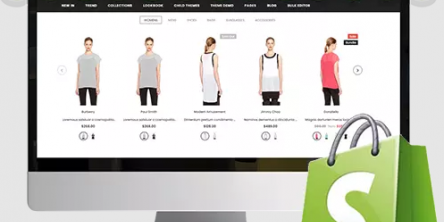Multi-Channel Retail in E-Commerce: An Overview

It has been for the world to see the role that e-commerce has come to play. However, this industry has evolved, giving us advanced options like multi-channel selling; in fact, it has proven to be quite a hit in the global market. A Wharton study shows that e-commerce shoppers spend on varied channels is about 32 percent more. Retailers have been quick to see this change, with 73 percent of them believing that selling across different platforms is the key to success in this cut-throat market.
That’s enough stats for today; let’s get down to business and see how this concept of selling benefits e-commerce businesses.
- Global access: A multi-channel platform gives you instant access to not only a substantially more extensive set of audiences but also one that is spread across the globe.
- Cut down risk: E-commerce can be a slightly onerous undertaking, especially considering the finicky nature of customer demand. Selling on multiple channels helps you substantially alleviate the threat posed by evolving trends and customer behavior.
- Improved brand visibility: When your brand is present on multiple channels across the interwebs, the visibility scope shoots up immediately. This not only enhances brand presence but also helps improve sales.
An informed decision is when one also considers the issues associated with the solutions in question. So, here are some of the challenges related to multi-channel marketplaces.
- Ensuring a seamless cash flow: Most marketplaces offer their unique method of processing and handling payments. Some may opt to transfer payments to sellers once the items are shipped. In contrast, others may have a fixed monthly schedule when they send out payments to sellers operating on their platform. As a result, selling on multi-channel marketplaces poses a considerable challenge to a consistent cash flow. And let’s not forget the additional challenges associated with returns and refunds.
- Demand forecast: Since you are present on different channels, it is imperative to factor in the trends and demands on each one of them, which can often be distinctive. This is because every channel tends to serve its unique set of audiences. Anyway, the point is that this difference in trends and requirements can make it challenging to properly gauge the overall demand for your products and make accurate forecasts.
- Picking the right platform: Of course, it would defeat the purpose of multi-channel selling if you were to choose a platform that is unable to connect you to the right audience. Hence, one must take ample time to decide which platforms and marketplaces are best aligned with the needs of your business. You can always engage the services of expert e-commerce developers to help you make an informed decision.
Now, before we wrap up this guide, allow us to quickly walk you through the overall journey of starting your journey of selling on a multi-channel e-commerce platform or marketplace.
- Pick the proper framework: Much like identifying the right marketplace or platform for your business, it is equally challenging to identify the framework to build their e-commerce store. Shortlist from the top contenders in the market, such as WooCommerce, Magento, OpenCart, PrestaShop, etc., and see how they fare against your business requirements.
- Identify the best-suited marketplace: The next step toward embracing the new way of e-commerce is finding a platform or marketplace. For this, you must first understand your target audience and find out which platforms they flock to, so you can reach them right where they are.
- Select multi-channel integration: The final step on this journey after the audience has been identified and the store is ready to go. So, get yourself a robust connector for the integration and get started ASAP.
Clearly, a multi-channel e-commerce solution is a complex undertaking, but one that offers rewards and grows in abundance. So, while it continues to be highly recommended in the e-commerce sphere, might we also recommend adopting a carefully crafted strategy that analyses and factors in your business's unique requirements.
Similar Articles
Discover how an online store can expand your local business globally by reaching new markets, increasing sales, and leveraging e-commerce strategies effectively.
In today's fast-paced digital landscape, succeeding in ecommerce requires more than just having a great product and a functional website. With millions of online stores vying for attention, standing out from the crowd demands strategic planning and execution.
At this point, e-commerce is practically omnipresent. Think about it — e-commerce is present in various sectors already, helping people and businesses buy a wide variety of products and services through some clicks of a mouse. But what keeps such e-commerce businesses running in the face of such intense requirements?
For businesses to thrive in the dynamic world of e-commerce, staying ahead of the competition is essential. And therefore, delivery of exceptional customer experiences has become paramount for everyone – from small startups to established enterprises
E-commerce businesses are facing challenges to stay competitive. This is where you need the Shopify application. Read on to learn about the Shopify app guide.
In ecommerce, product listing optimization (PLO) is one of the most important strategies you can employ. Simply put, PLO is the process of optimizing your product listings so that they are easily found by shoppers and lead to more sales.
As an entrepreneur, you already know that it’s essential to differentiate your company from others like it, but what about your e-commerce site? There are thousands of other emerging brands in the digital space that offer similar products and services, but that doesn’t mean yours has to look the same.
Online shopping has become a prevalent practice in recent years, but the real question is if it's environmentally sustainable? As we move towards the future, we need to gravitate towards more environmentally conscious decisions
E-commerce has been around for a long time now. Given the purpose that it was created to serve, it should come as no surprise that it is now a critical part of the global economy. Despite the raging popularity it continues to enjoy in the worldwide market, there is no denying that it too has evolved considerably since it first emerged on the scene









